Yifeng Che
General multi-fidelity surrogate models: Framework and active learning strategies for efficient rare event simulation
Dec 07, 2022



Abstract:Estimating the probability of failure for complex real-world systems using high-fidelity computational models is often prohibitively expensive, especially when the probability is small. Exploiting low-fidelity models can make this process more feasible, but merging information from multiple low-fidelity and high-fidelity models poses several challenges. This paper presents a robust multi-fidelity surrogate modeling strategy in which the multi-fidelity surrogate is assembled using an active learning strategy using an on-the-fly model adequacy assessment set within a subset simulation framework for efficient reliability analysis. The multi-fidelity surrogate is assembled by first applying a Gaussian process correction to each low-fidelity model and assigning a model probability based on the model's local predictive accuracy and cost. Three strategies are proposed to fuse these individual surrogates into an overall surrogate model based on model averaging and deterministic/stochastic model selection. The strategies also dictate which model evaluations are necessary. No assumptions are made about the relationships between low-fidelity models, while the high-fidelity model is assumed to be the most accurate and most computationally expensive model. Through two analytical and two numerical case studies, including a case study evaluating the failure probability of Tristructural isotropic-coated (TRISO) nuclear fuels, the algorithm is shown to be highly accurate while drastically reducing the number of high-fidelity model calls (and hence computational cost).
Physics-Informed Machine Learning of Dynamical Systems for Efficient Bayesian Inference
Sep 19, 2022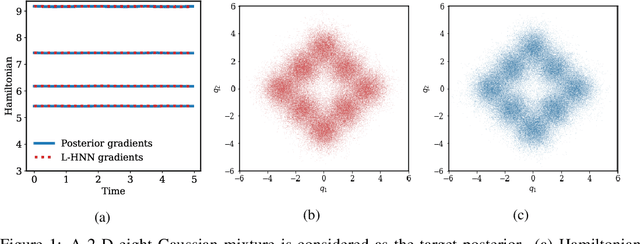

Abstract:Although the no-u-turn sampler (NUTS) is a widely adopted method for performing Bayesian inference, it requires numerous posterior gradients which can be expensive to compute in practice. Recently, there has been a significant interest in physics-based machine learning of dynamical (or Hamiltonian) systems and Hamiltonian neural networks (HNNs) is a noteworthy architecture. But these types of architectures have not been applied to solve Bayesian inference problems efficiently. We propose the use of HNNs for performing Bayesian inference efficiently without requiring numerous posterior gradients. We introduce latent variable outputs to HNNs (L-HNNs) for improved expressivity and reduced integration errors. We integrate L-HNNs in NUTS and further propose an online error monitoring scheme to prevent sampling degeneracy in regions where L-HNNs may have little training data. We demonstrate L-HNNs in NUTS with online error monitoring considering several complex high-dimensional posterior densities and compare its performance to NUTS.
Bayesian Inference with Latent Hamiltonian Neural Networks
Aug 12, 2022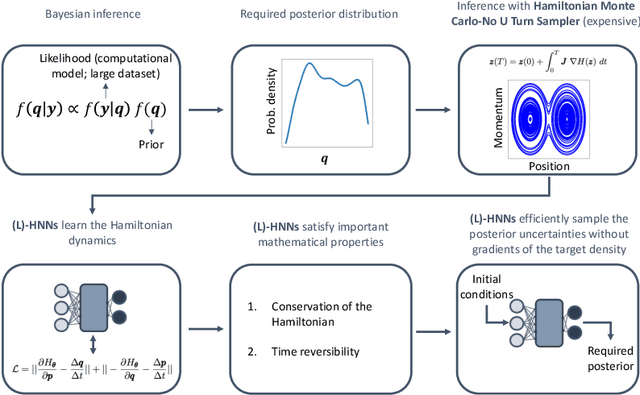
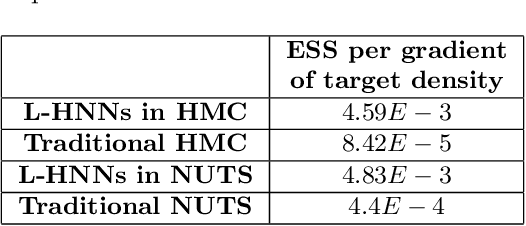
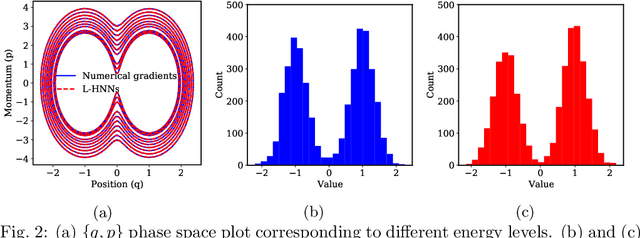
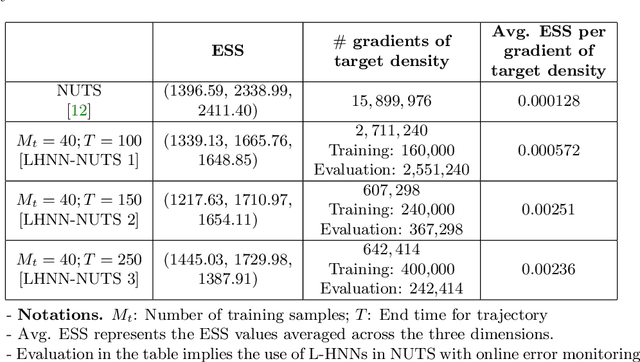
Abstract:When sampling for Bayesian inference, one popular approach is to use Hamiltonian Monte Carlo (HMC) and specifically the No-U-Turn Sampler (NUTS) which automatically decides the end time of the Hamiltonian trajectory. However, HMC and NUTS can require numerous numerical gradients of the target density, and can prove slow in practice. We propose Hamiltonian neural networks (HNNs) with HMC and NUTS for solving Bayesian inference problems. Once trained, HNNs do not require numerical gradients of the target density during sampling. Moreover, they satisfy important properties such as perfect time reversibility and Hamiltonian conservation, making them well-suited for use within HMC and NUTS because stationarity can be shown. We also propose an HNN extension called latent HNNs (L-HNNs), which are capable of predicting latent variable outputs. Compared to HNNs, L-HNNs offer improved expressivity and reduced integration errors. Finally, we employ L-HNNs in NUTS with an online error monitoring scheme to prevent sample degeneracy in regions of low probability density. We demonstrate L-HNNs in NUTS with online error monitoring on several examples involving complex, heavy-tailed, and high-local-curvature probability densities. Overall, L-HNNs in NUTS with online error monitoring satisfactorily inferred these probability densities. Compared to traditional NUTS, L-HNNs in NUTS with online error monitoring required 1--2 orders of magnitude fewer numerical gradients of the target density and improved the effective sample size (ESS) per gradient by an order of magnitude.
Reliability Estimation of an Advanced Nuclear Fuel using Coupled Active Learning, Multifidelity Modeling, and Subset Simulation
Jan 06, 2022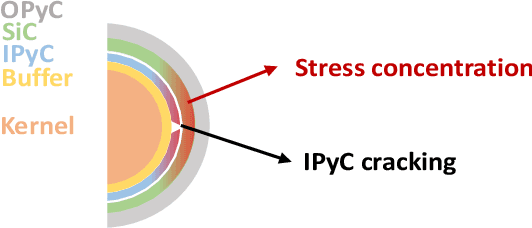
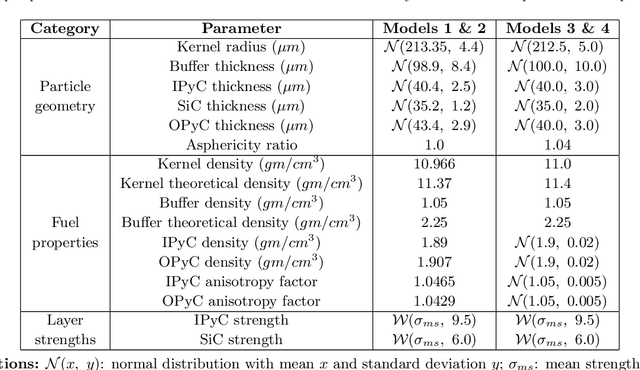
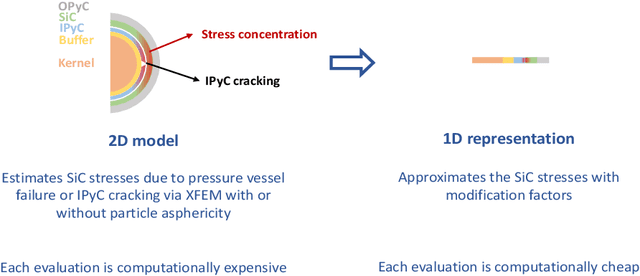

Abstract:Tristructural isotropic (TRISO)-coated particle fuel is a robust nuclear fuel and determining its reliability is critical for the success of advanced nuclear technologies. However, TRISO failure probabilities are small and the associated computational models are expensive. We used coupled active learning, multifidelity modeling, and subset simulation to estimate the failure probabilities of TRISO fuels using several 1D and 2D models. With multifidelity modeling, we replaced expensive high-fidelity (HF) model evaluations with information fusion from two low-fidelity (LF) models. For the 1D TRISO models, we considered three multifidelity modeling strategies: only Kriging, Kriging LF prediction plus Kriging correction, and deep neural network (DNN) LF prediction plus Kriging correction. While the results across these multifidelity modeling strategies compared satisfactorily, strategies employing information fusion from two LF models consistently called the HF model least often. Next, for the 2D TRISO model, we considered two multifidelity modeling strategies: DNN LF prediction plus Kriging correction (data-driven) and 1D TRISO LF prediction plus Kriging correction (physics-based). The physics-based strategy, as expected, consistently required the fewest calls to the HF model. However, the data-driven strategy had a lower overall simulation time since the DNN predictions are instantaneous, and the 1D TRISO model requires a non-negligible simulation time.
Machine learning-assisted surrogate construction for full-core fuel performance analysis
Apr 17, 2021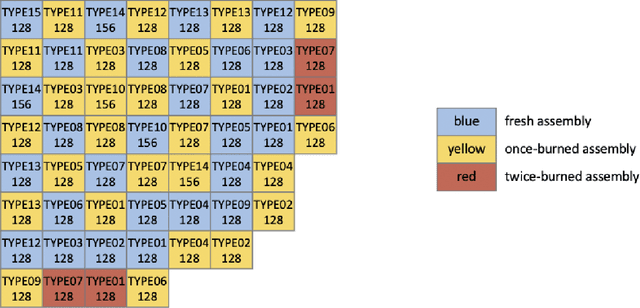
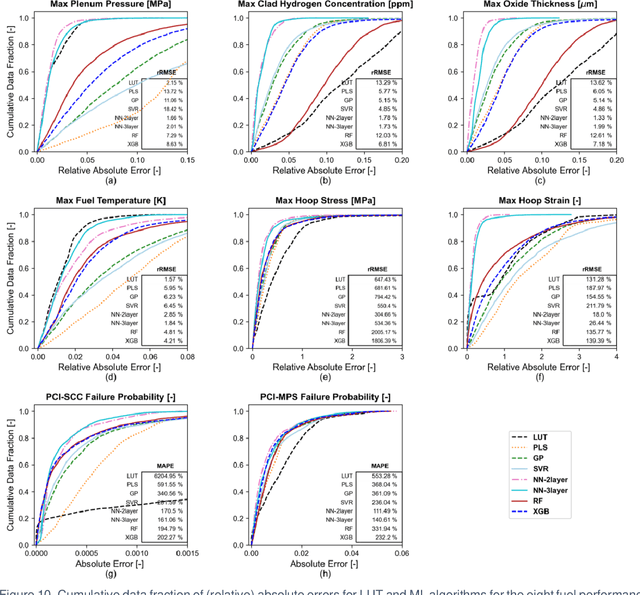
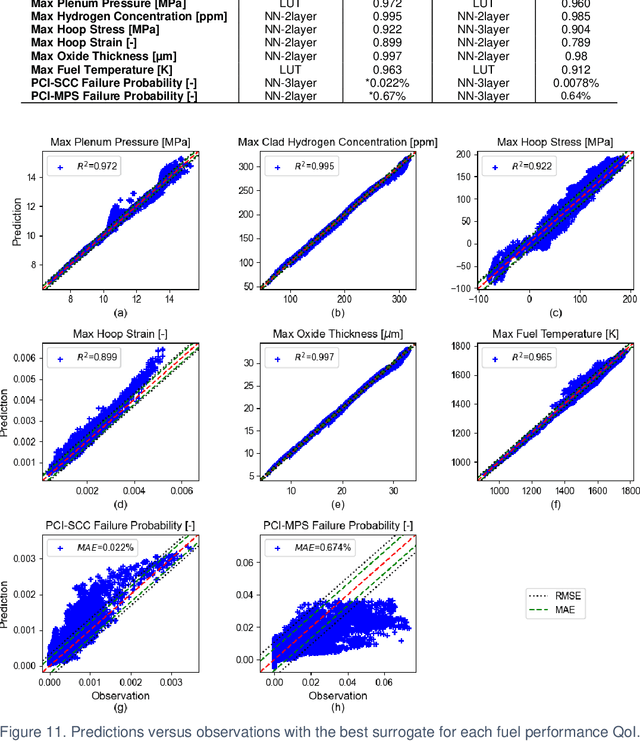
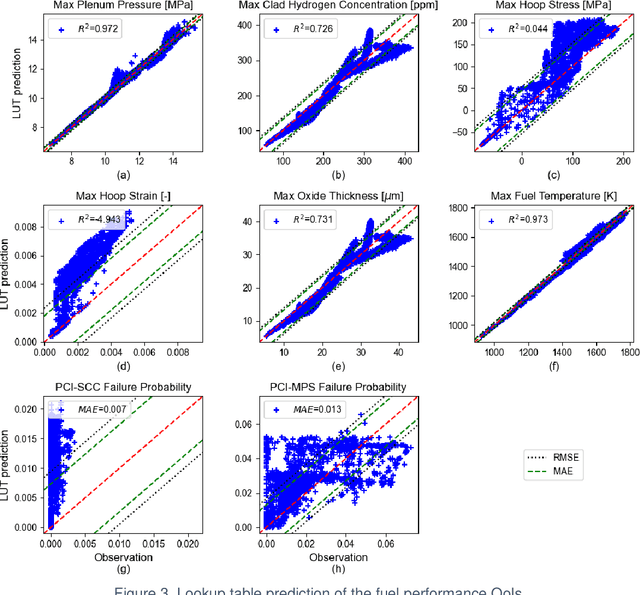
Abstract:Accurately predicting the behavior of a nuclear reactor requires multiphysics simulation of coupled neutronics, thermal-hydraulics and fuel thermo-mechanics. The fuel thermo-mechanical response provides essential information for operational limits and safety analysis. Traditionally, fuel performance analysis is performed standalone, using calculated spatial-temporal power distribution and thermal boundary conditions from the coupled neutronics-thermal-hydraulics simulation as input. Such one-way coupling is result of the high cost induced by the full-core fuel performance analysis, which provides more realistic and accurate prediction of the core-wide response than the "peak rod" analysis. It is therefore desirable to improve the computational efficiency of full-core fuel performance modeling by constructing fast-running surrogate, such that fuel performance modeling can be utilized in the core reload design optimization. This work presents methodologies for full-core surrogate construction based on several realistic equilibrium PWR core designs. As a fast and conventional approach, look-up tables are only effective for certain fuel performance quantities of interest (QoIs). Several representative machine-learning algorithms are introduced to capture the complicated physics for other fuel performance QoIs. Rule-based model is useful as a feature extraction technique to account for the spatial-temporal complexity of operating conditions. Constructed surrogates achieve at least ten thousand time acceleration with satisfying prediction accuracy. Current work lays foundation for tighter coupling of fuel performance modeling into the core design optimization framework. It also sets stage for full-core fuel performance analysis with BISON where the computational cost becomes more burdensome.
 Add to Chrome
Add to Chrome Add to Firefox
Add to Firefox Add to Edge
Add to Edge